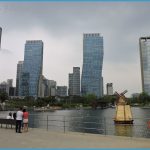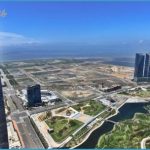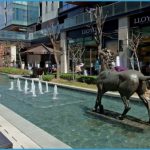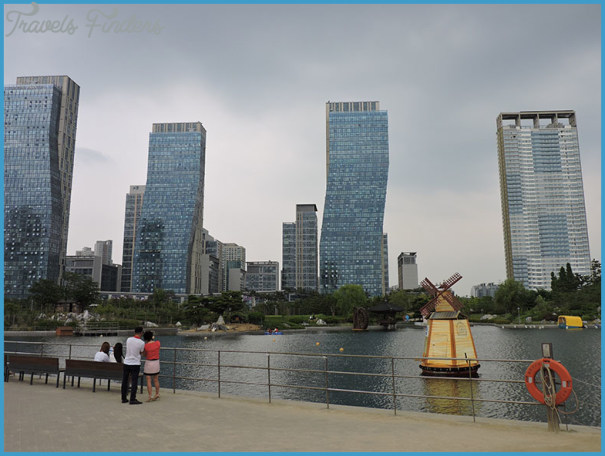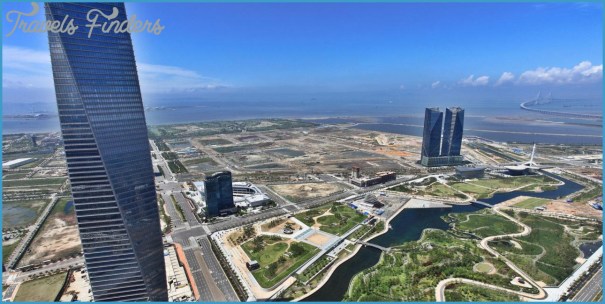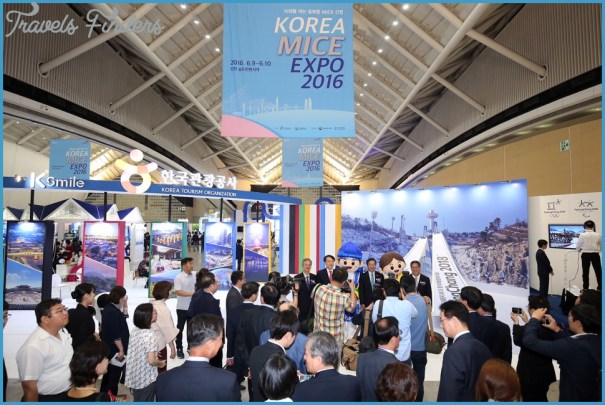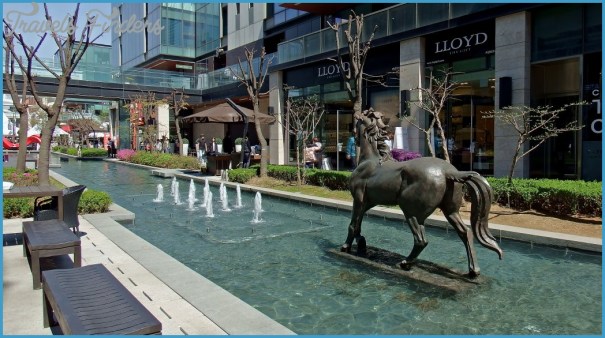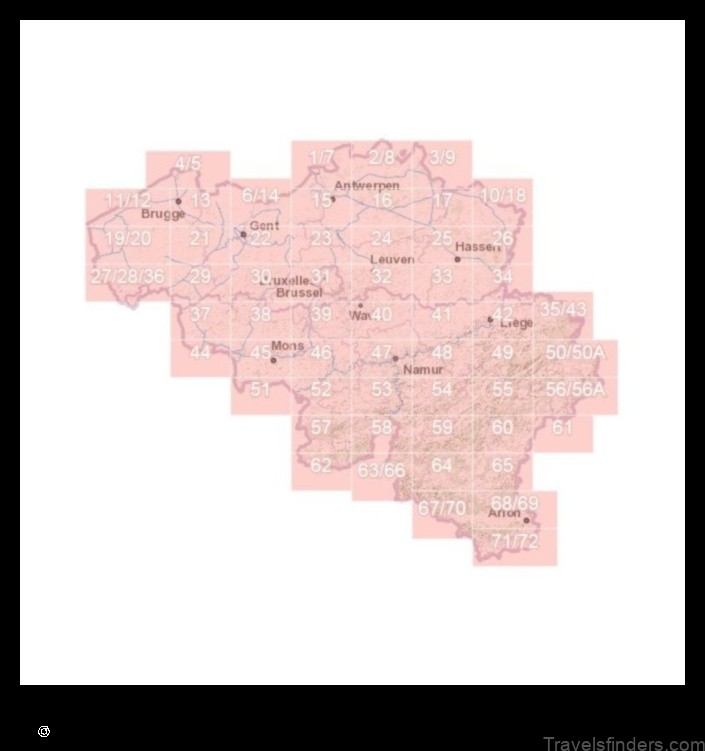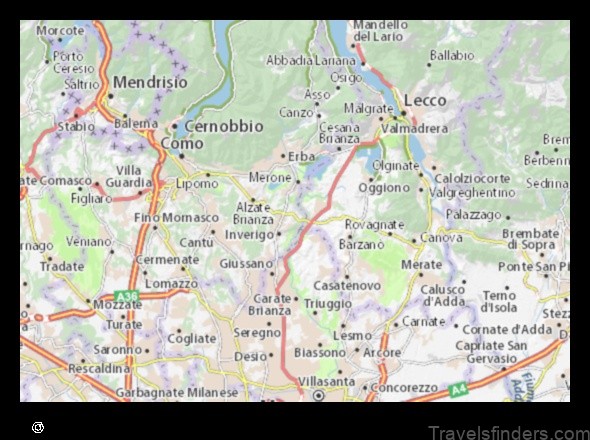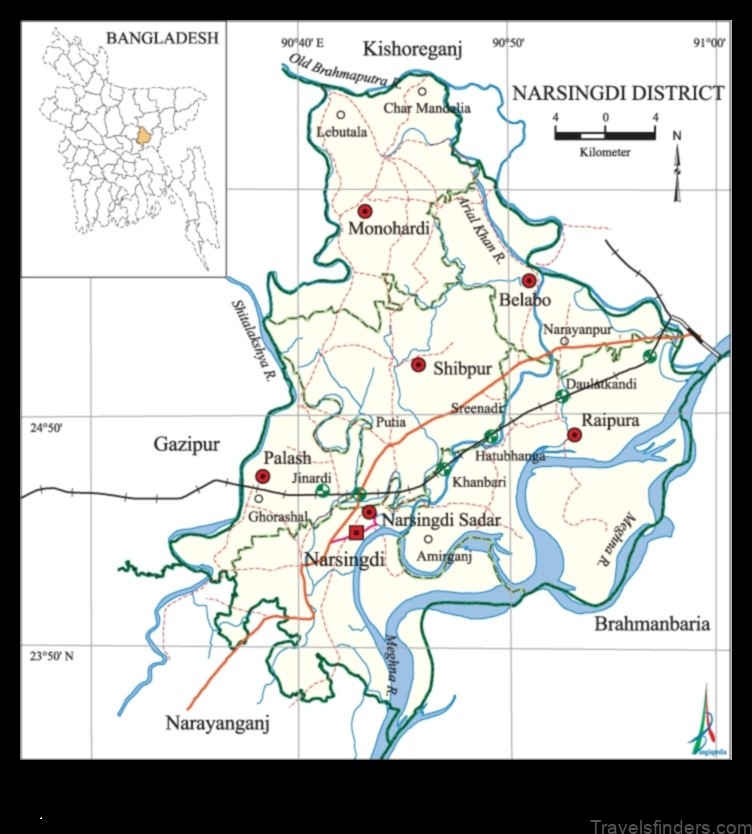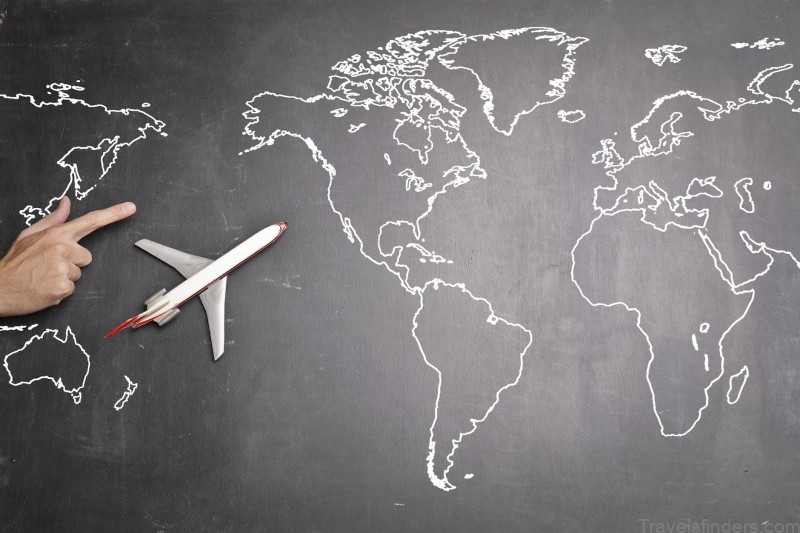Songdo aims to incorporate technoogy in the buit form. Besides a SMART buit form, the city is trying to emphasize a link with the natural landscape. A canal system highlights the water theme, which is utilized by the waterfront shopping districts, green, and recreatonal spaces.
Songdo has unfortunately not responded to the regonal geographic or cultural context. The landscape lacks the vibrant streets bustling with activities that are typical of Korean cuture. Instead, the city announces tsef as a global blend of cities, with its building bocks replicating icons from around the world.
Travel to Songdo Photo Gallery
Working patterns and enterprises mobilized through social networks, and cities with e-governance, smart cards for multi-modal transport, connected vehicles, e-learning, and mobile banking are all projected to have a captive market of around US$730 billion by 2020. ICT applications will have their place in fully automated homes and workplaces with unified communications. Many such ICT applications are already in operation today, and governments are investing heavily to create smart cities, digital cities, future cities, and/or intelligent cities. This mega-trend has the potential to generate connected living in the world and will be evidenced in our home, work, and city environments.
Parallel to virtual connectivity will be connectivity in the real realm. The increasing investment in transit and growing numbers of TODs and place-making projects will create future cities that are connected and active urban places accessible by sustainable and integrated transport. ICT-enabled e-governance will provide avenues for e-citizens to participate in decisions about their living environments. A key measure of the attractivemess of a place is the degree to which people feel connected with each other through formal and informal networks. Through ICT-enabled connections, residents can leverage each other’s skills. Residents, local organizations, and local businessess can connect to find jobs, services, or products that build individual and community capacity. Care will be needed to bridge the gap between digitally rich and poor residents.
Will machine-to-machine communication, cloud computing, networks of data, virtual connections-the Internet of Things6-be the movers and shakers for the connecting place, connecting people paradigm? Will the resultant improved efficiency, optimizations, convenience, safety, and predictability lead to a place that is valued by its citizens ? Will the connected virtual place overshadow the connected ‘real’ place? Will becoming a digital citizen become more important than being a ‘real’ citizen?

